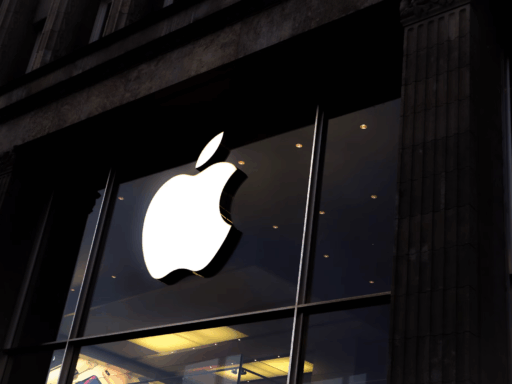Nike, Inc. has long been recognized as a global leader in the sportswear industry, producing iconic athletic apparel, footwear, and equipment. However, in recent years, the company has become just as well-known for its commitment to sustainability and environmental stewardship. Through its bold and far-reaching “Move to Zero” initiative, Nike is aiming to eliminate carbon emissions and waste across its entire value chain, focusing on sustainable product design, renewable energy, water stewardship, and responsible sourcing. This initiative underscores Nike’s ongoing efforts to integrate sustainability into its business model while addressing global climate challenges and promoting social equity.
Nike’s sustainability journey is grounded in its mission to create a more sustainable world for athletes and communities, driving positive change both inside and outside its operations. By focusing on environmental impact reduction, community empowerment, and continuous innovation, Nike sets a powerful example for other corporations on how sustainability can be a driving force for business growth.
- Nike has committed to achieving net-zero emissions across its value chain by 2050, with interim 2030 targets validated by the Science Based Targets initiative (SBTi).
- As of FY22, Nike achieved 100% renewable electricity in owned and operated facilities in the U.S., Europe, and China.
- Over 70% of Nike’s products now contain recycled or sustainably sourced materials.
Sustainability Strategy and Goals
Nike’s sustainability strategy is rooted in the company’s dedication to reducing its environmental footprint, advancing circularity, and promoting a just, inclusive society. The company has set clear, ambitious goals and metrics to ensure that its operations, products, and global supply chains align with the principles of sustainability and equity.
Net Zero and Carbon Emissions
Nike’s long-term commitment to net-zero emissions is at the heart of its sustainability strategy. The company has adopted science-based targets, aligning with the global call for climate action.
- Science-Based Targets: Nike aims to reduce its greenhouse gas (GHG) emissions by 65% by 2030 and achieve net-zero emissions by 2050 across all scopes—Scope 1, 2, and 3. This is aligned with the Science Based Targets initiative (SBTi), which helps companies set emissions reduction targets in line with the latest climate science.
- Scope 3 Emissions Reduction: Nike recognizes that the largest portion of its emissions comes from Scope 3—emissions generated by its extended supply chain, including raw material sourcing, manufacturing, and transportation. Nike aims to reduce Scope 3 emissions by 30% by 2030, focusing on working with suppliers and partners to reduce carbon footprints throughout its entire value chain.
- Renewable Energy: In 2023, Nike achieved 96% renewable electricity usage across its global operations, exceeding its 2025 target to transition to 100% renewable energy in its owned and operated facilities. This progress is a significant milestone in Nike’s decarbonization efforts, particularly in its factories, offices, and retail stores.
Circular Economy and Waste Reduction
Nike is committed to fostering a circular economy, where resources are reused, remade, and recycled to minimize waste and reduce environmental impact.
- Move to Zero Initiative: Launched in 2019, Nike’s Move to Zero initiative aims to eliminate waste and carbon emissions throughout its global supply chain. The company is actively working to design products for a circular future by incorporating recyclable and renewable materials into its manufacturing processes and ensuring that products can be recycled or reused at the end of their life cycle.
- Recycled Materials: Nike has made significant strides in using recycled materials in its products. Approximately 80% of Nike’s products are made using recycled materials, including recycled polyester, sustainable cotton, and recycled rubber. Nike has introduced innovations like Flyleather, which is made with 50% recycled natural leather fiber, and Nike Air soles, which incorporate recycled foam.
- Waste Diversion: Nike has reached a critical goal, achieving 100% waste diversion from landfills in its Tier 1 manufacturing facilities. Additionally, the company has recycled or repurposed at least 80% of the waste generated in its global operations, significantly reducing its environmental footprint.
Water Stewardship
Water conservation is another key component of Nike’s sustainability efforts, especially in the production of textiles and footwear. The company has set ambitious targets to reduce its water usage and improve the sustainability of its water practices.
- Water Efficiency in Manufacturing: Nike has committed to reducing freshwater usage in textile dyeing and finishing by 25% by 2025. This reduction is critical, as the textile and apparel industry is one of the largest industrial consumers of freshwater globally. Nike’s water-efficient production methods include waterless dyeing technologies and adopting closed-loop water systems in its factories to reuse water.
- Water Risk Mitigation: Nike works with its suppliers to implement best practices for water management, particularly in water-scarce regions. The company’s efforts include training suppliers on water-efficient technologies and establishing programs to address water risks in key production regions.
Regenerative Agriculture and Biodiversity
Nike is increasingly integrating regenerative agriculture practices and sustainable sourcing into its material procurement strategies, recognizing the importance of maintaining biodiversity and soil health.
- Sustainable Materials: Nike is expanding its use of environmentally preferred materials, such as regenerative cotton, which improves soil health and sequesters carbon, and recycled rubber from old shoes to reduce landfill waste.
- Flyleather and Plant-Based Innovations: Nike’s Flyleather innovation, which uses up to 50% recycled natural leather fiber, supports its sustainability efforts by utilizing more sustainable raw materials. Nike is also researching plant-based materials like algae-based foam for shoe soles, reducing reliance on petrochemical products.
Packaging and Circular Economy
Nike is also transforming its approach to packaging, moving towards fully recyclable, reusable, or compostable packaging.
- Sustainable Packaging: Nike is working to make 100% of its packaging recyclable, reusable, or compostable by 2025. This initiative is part of Nike’s broader efforts to reduce its environmental impact, focusing on reducing packaging materials and shifting to alternatives like recycled paper, plant-based plastics, and compostable films.
Human Rights and Responsible Sourcing
Nike’s commitment to human rights is reflected in its supplier relationships, labor standards, and transparency in sourcing. The company works closely with its suppliers to ensure ethical labor practices and responsible sourcing of materials.
- Supplier Code of Conduct: Nike enforces a strict Supplier Code of Conduct to ensure fair labor practices, prevent exploitation, and guarantee safe working conditions across its global supply chain. Nike’s sustainability efforts include actively working to improve labor conditions and reduce risks related to forced labor, child labor, and discrimination.
- Transparency and Ethical Sourcing: Nike is committed to full transparency in its supply chain and has made significant progress in identifying and reporting sourcing risks and practices. The company works with third-party auditors to assess and improve supplier compliance with environmental and labor standards.
Community and Social Impact
Nike’s social impact goes beyond product innovation, extending into education, youth empowerment, and community engagement.
- Community Investment: Nike invested $142.7 million in community programs in FY23, focusing on education, sport, and inclusive communities. The company also provides funding and resources for local nonprofits through its Nike Foundation.
- Youth Engagement: Through its global programs, Nike has helped 1.1 million kids discover the joy of movement, with a strong emphasis on reaching underrepresented youth. Notably, 48% of these kids were girls, showcasing Nike’s commitment to promoting gender equality in sports.
- Inclusive Sport: Nike advocates for inclusivity in sport, working to dismantle barriers that prevent marginalized communities from accessing sports and fitness opportunities. Through its various programs, the company has partnered with over 250 nonprofit organizations worldwide to increase equitable access to sport.
Governance and Transparency
Nike’s governance structure ensures that its sustainability efforts are aligned with corporate responsibility, ethical practices, and stakeholder engagement.
- Sustainability Reporting: Nike provides detailed annual reports on its sustainability progress and impact, ensuring transparency for its investors, customers, and other stakeholders. These reports include metrics on emissions, waste, water use, and community investments, reinforcing the company’s commitment to long-term, measurable results.
Technology and Innovation
Nike integrates cutting-edge technology and sustainable design into every aspect of its operations.
- Nike Forward: Nike Forward is a new sustainable material innovation that reduces carbon emissions by 75% compared to traditional knit fleece. This innovative product showcases Nike’s focus on both performance and sustainability.
- Electric Vehicles (EVs): Nike is investing in electric heavy-duty trucks to transport products across long distances, reducing carbon emissions by 45% compared to conventional diesel trucks. The company is also exploring electric vehicle technology for its supply chain operations to further decarbonize logistics.
Measurable Impacts
Nike’s sustainability efforts are producing significant measurable impacts across its operations:
- GHG Emissions Reduction: Nike has reduced its Scope 1 and 2 emissions by 69% from 2020 to 2023, surpassing its interim 65% emissions reduction target for the period.
- Waste Diversion: The company has successfully diverted 100% of waste from landfills in its Tier 1 manufacturing facilities and has recycled 80% of this waste into Nike products and other goods.
- Renewable Energy: Nike has achieved 96% renewable electricity usage in its global operations, exceeding its 2025 goal.
- Community Investment: Nike’s community investment reached $142.7 million in FY23, supporting youth programs, sports equity, and education.
Challenges and Areas for Improvement
Despite significant progress, Nike faces ongoing challenges:
- Scope 3 Emissions: Managing emissions across the extended supply chain remains one of the most complex challenges. Nike continues to collaborate with suppliers to reduce Scope 3 emissions and improve sustainability across its value chain.
- Plastic Waste: Reducing plastic waste, particularly in packaging and product components, remains an ongoing challenge. Nike is investing in alternatives to single-use plastics and continues to innovate in packaging materials.
- Supply Chain Transparency: While Nike has made substantial progress in improving supply chain transparency, ensuring ethical sourcing and fair labor practices across its global network continues to require constant oversight and collaboration.
Comparisons to Industry Competitors
Nike’s sustainability efforts position it as a leader in the sportswear industry, but it faces competition from brands like Adidas, Puma, and Under Armour.
- Adidas: Adidas has committed to net-zero emissions by 2050 and is also focusing heavily on circularity and sustainable materials.
- Puma: Puma has set science-based targets and is making strides toward reducing its environmental impact, though Nike is often ahead in material innovation and carbon-neutral product design.
- Under Armour: While Under Armour has taken steps to reduce emissions and improve efficiency, Nike’s commitment to comprehensive sustainability reporting and circular economy goals positions it as a leader.
Future Plans and Long-Term Goals
Nike has laid out a series of forward-looking initiatives that will further solidify its leadership in sustainability:
Community and Youth Empowerment: Nike will continue to strengthen its community programs, with a particular focus on youth sports, equitable access, and gender equality in sports.
Achieving Net-Zero Emissions: Nike aims to achieve net-zero emissions across its entire value chain by 2050, with key steps including further reductions in Scope 3 emissions, carbon-neutral product design, and continued renewable energy adoption.
Circular Product Portfolio: By 2030, Nike plans to have 50% of its key materials made from sustainable, renewable, or recycled sources. The company is increasing its investments in closed-loop manufacturing to ensure products can be easily recycled or repurposed.
Sustainable Water Management: Nike plans to achieve a 25% reduction in water usage per kilogram of textile dyeing and finishing by 2025, while improving water management practices in water-scarce regions.
Nike’s sustainability strategy is highly ambitious and comprehensive, addressing environmental impact, supply chain transparency, and community engagement in equal measure. The company’s Move to Zero initiative, commitment to renewable energy, and focus on circularity set a strong example for the sportswear industry. While challenges remain—particularly in managing Scope 3 emissions and reducing plastic waste—Nike’s ongoing innovations in materials, packaging, and product design are driving the industry forward. By continuing to integrate sustainability into every aspect of its business, Nike will remain a key player in shaping a sustainable future for the apparel and retail industries.
Source: https://purpose.nike.com/sustainability, https://purpose.nike.com/move-to-zero, https://www.patagonia.com/activism/, https://purpose.nike.com/environment, https://purpose.nike.com/product






